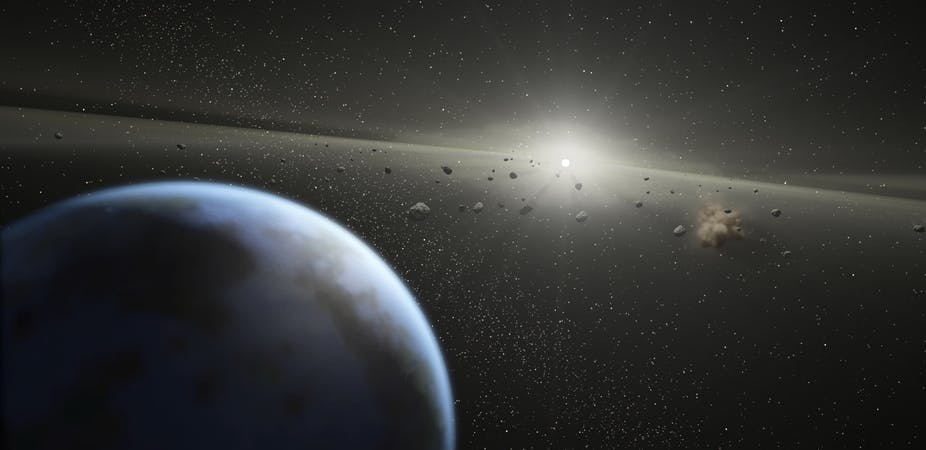An asteroid measuring up to 20km across hit South Australia up to 360 million years ago and left behind the one of the largest asteroid impact zones on Earth, according to new research published today.
The impact zone in the East Warburton Basin was buried under nearly four kilometres of earth, said Dr Andrew Glikson, a visiting fellow to the Australian National University’s Planetary Science Institute and a co-author of the paper.
“It’s significant because it’s so large. It’s the third largest impact terrain anywhere on Earth found to date,” Dr Glikson said.
“It’s likely to be part of a particular cluster that was linked with a mass extinction event at that time.”
Dr Glikson published his findings in a paper in the journal Tectonophysics, co-authored by ANU colleagues Dr John Fitzgerald and Dr Erdinc Saygin and by the University of Queensland’s Dr Tonguc Uysal.
The team analysed quartz grains drawn from over 200 samples taken from far below the Earth’s surface and studied underground seismic anomalies.
Dr Glikson said there was a chance that the asteroid that caused the impact zone actually split in two before it hit.
“We are studying another anomaly in West Warburton that could well be its twin but we don’t know yet.”
Dr Simon O'Toole, Research Astronomer at the Australian Astronomical Observatory, said the finding was very interesting.
“It strengthens the case for the idea that the Chicxulub crater is connected to the mass extinction of the dinosaurs. We are starting to see more evidence that impact events caused mass extinction events,” said Dr O'Toole, who was not involved in the research.
“Australia is a fantastic place for impact crater hunters because we have huge open space with nothing in it,” said Dr O'Toole, adding that the size of the new impact zone was very significant.
“It’s huge. Most asteroid events are about 100m in diameter.”
Another asteroid, dubbed 2012 DA14, will pass within 27,700 kilometres from Earth on Saturday, potentially passing communication satellites, but is unlikely to hit the planet.

